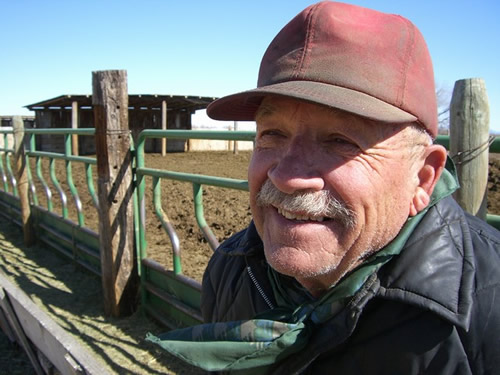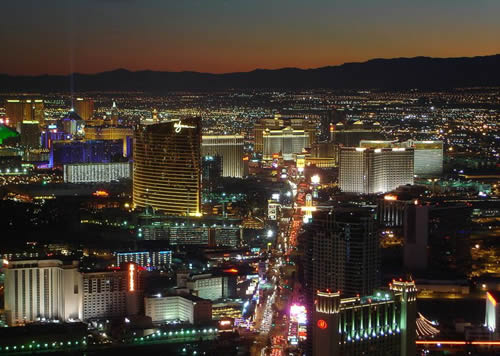 |
||||||
|
|
In only a fraction of a heartbeat ago, in terms of geological time, there was a thousand feet of water above the small ranching community of Callao, UT, located in the west-central part of the Great Basin. Approximately half of that great inland sea broke out to the north and ran to the Pacific Ocean via the Snake and Columbia Rivers. The rest has evaporated over the years; all that is left now is the Great Salt Lake. Yet, it is in reality only a tiny remnant of that great landlocked body of water we now call Lake Bonneville. Knowing the simple fact that so much of the water simply evaporated must give pause to anyone who believes our arid southwest can maintain a stable water supply. We are not gaining water; we are losing water. Recently, the Southern Nevada Water Authority, SNWA, came to Baker, Nevada, in the south end of Snake Valley. They came to inform the residents of Snake Valley that they planned to take the water that we waste, the surplus water, and water resources we don’t even know we have. They want to claim water lost to evapotransporation and vast reserves of water resources known as the deep carbonate aquifer. Just how we are wasteful of our water is never fully explained. It was soon apparent that the intent of SNWA, in all their unmitigated arrogance, was to take our water simply because they could—they are bigger and have more money. That their words were laden with subterfuge and fooled no one here in the north could not have come as a surprise to anyone, most of all to those who pressed forth their contentious message.
It did, however, create a powerful bond among many of us in the northern valleys to resist all efforts to take our water. As might be expected, there exploded immediate, angry resistance toward those who would take our means of survival. The mantle of becoming insurgents was unwelcome, but nonetheless, was forced upon us by circumstances upon which we had no control. Almost daily, now, we are forced to endure emanations from SNWA about their benign intentions. According to SNWA’s Patty Mulroy. "Our commitment is to be both a good neighbor and a responsible steward of water resources." Further, SNWA "is proposing to utilize the unused, naturally replenished groundwater and to ensure the communities and lifestyles are protected." The juxtaposition of the two concepts is mutually incompatible and is absurd in the extreme and is supposed to be ignored by all to whom this is a life and death matter. SNWA has, so it would seem, been "hanging its hat" on two loudly proclaimed and unproven premises. One, that there is a surplus of water in these northern valleys; and two, that there is virtually an unlimited source of water in what is presumed to be the deep carbonate aquifer. The information put forth that there is an excess of unused water available for the taking likely comes from studies done by the Utah water resource people completed prior to 1992. One study done here in Utah guesstimates that there were 50,000 acre ft of unused water available in Snake Valley. Some of us who were asked to review this study at the time questioned the accuracy of this supposedly excess water. We were told, however, that the figures were only estimates and would need a much more detailed, in depth, scientific inquiry to verify the amount of water that was actually available. The most significant and important thing to understand is that these studies were done prior to 1992 and before the last eight years of debilitating drought. These estimates, therefore, have become meaningless until the drought data is factored into the total estimates of available water. Several very important aspects of this whole picture have changed drastically in the last ten to twelve years. It is well understood here locally that we have a water deficit and have no surplus water. Further, SNWA knows that the reservoirs on the Colorado River are now down to almost half of their full capacities. And the awful drought did not just affect Southern Nevada. Obviously, the whole of the western United States with its myriad miles of lakes, streams, and rivers contributing to the Colorado River were affected as well. It’s true that no one planned for this, but that doesn’t change the fact that the rains have not been falling and the water just isn’t there. We here in Snake Valley, the driest valley in the second driest state, were in many ways even more devastated. Trees were dying in the Deep Creek Mts. The greasewood that holds the valley floor together was severely stressed---much of it was dying. Springs, seeps, and swampy areas were drying up and the mountain aquifer was reduced to a trickle. One meadow caught fire and burned the peat-like matter the entire winter of 2002-2003. Creeks flowing from the canyons of the Deep Creek Mountains had greatly reduced flows, and some dried up altogether. Some years the water from the mountain canyons did not reach our fields for irrigation. It does not take a long, laborious, expensive study to establish the simple fact that we have no surplus water. Our water table has itself fallen 4 to 5 feet. This has been caused not only by a once in 500 year drought but also by the exponential increase in groundwater withdrawal by we who irrigate to grow hay for our livestock. There are more wells being pumped for much longer periods of time for a much greater volume of water with many more applications being submitted. Without any help from anyone, we are, coupled with the drought, withdrawing water from the underground faster than it is being recharged. SNWA would have us believe that they can pump more water from the underground altogether than is presently being pumped by all the users here in Snake Valley put together with no effect upon the quality of life here. Then, there is the so called deep carbonate aquifer. Vast amounts of water are supposed to exist in nearly infinite amounts available for pumping indefinitely. This aquifer in theory is supposed to be separated from the water above it with an impervious stratum of consolidated material. This would allow the lower water to be pumped out with presumably no effects on the alluvial aquifer above. Great cracks and caverns do exist, so we are asked to believe that they are somehow not connected to the alluvial aquifers that contain these large amounts of water. We are supposed to believe that there will be no adverse consequences to the removal of the lower water. Nor will the upper water flow, seep, or drain into the vacuum formed by pumping from below. Yet, a study of this great carbonate aquifer yielded no definite knowledge of its true nature or its ability to be pumped out without affecting the surface water. The hydrologists who study the carbonate aquifer say that the knowledge of its existence and its connectivity and the possible effects of pumping from it are "poorly constrained". "Poorly constrained" means it is not well understood. We know that throughout the Great Basin the source of the warm and hot springs is the carbonate aquifer. These springs have been flowing for thousands of years, likely at a much greater volume in the past than at the present. Somewhere, from some source, those warm and hot springs have to be recharged. And if they are recharged, then there has to be some connection to the surface through both mountain and valley passages. There is no other source of recharge except from these storms that come ever so seldom. And often these storms are just high, dry winds that leave little or no moisture. Here in Snake Valley, a two-inch rain is one drop every two inches. As SNWA becomes evermore desperate and aggressive in their search for water, we in turn are told not to be emotional. Be willing to negotiate, they ask. Yet, to the citizens of Snake Valley and White Pine County in Nevada, it is glaringly obvious that to negotiate is to lose. For negotiation can only lead to litigation. It should be obvious to even the most casual observer of this blatant chicanery that while we are supposed to retain a taciturn composure, they should be allowed to shrilly and hysterically claim an immediate and desperate need for anyone’s and everyone else’s water. How long would agrarian, pastoral populations, small in numbers, and not truly wealthy by Southern Nevadan terms in any way be able to survive in court even if justice were available? Justice, like water, tends to follow money. In a recent New England case, the U.S. Supreme Court handed down a decision to take private property for a shopping center. It is only one, small step for another court decision to take our water for a more profitable venture. This very thought strikes fear in our hearts. SNWA repeatedly and often proclaims that they would turn off the pumps if any adverse effects were measured or detected upon our water supply or our way of life. Are we to believe then that a 2-5 billion dollar aqueduct system built to allocate water to various housing projects yet to be built, expecting and depending on water from our valleys, would be turned off? While none of us here are likely to be called brilliant, we are not altogether stupid. The golf courses would have to be kept green, swimming pools filled, fountains flowing, and toilets and bidets flushing. Who could or would push the "off"button? In a recent Time magazine article, Patty Mulroy complained, "Exactly where do they expect us to go?" There were several suggestions. One was to go somewhere below the deep carbonate aquifer. Another was to move Las Vegas to New Orleans. Absurd, perhaps, but so, also, is the escalating desire for an ever increasing amount of water from one of the driest areas on the planet. This is to support a complex that has no possibility of being sustainable. The "water grab" simply will not work. They simply cannot take the amount of water from these western valleys and maintain their historic integrity. Lower the water as little as fifty feet, and the springs and artesian wells and seeps will dry up. Pumping will become too expensive for farmers and ranchers. Wells will have to be drilled ever deeper or abandoned altogether making our homes and properties worthless. Who would purchase property with no permanent source of water in barren valleys with frequent, raging dust storms. "Without water, we’ll croak." Whoever said that, said a mouthful. When the greasewood and other vegetation dependent on the present available water begins to die, the desert soil becomes evermore unstable. Once the cover is removed, the winds, sometimes 50 to 70 miles per hours, will whip up the fine sands and clays of the valley floor. Dust storms reaching 3 to 5 thousand feet high will impact everything in its path. That includes the cities of the Wasatch Front as well as the Great Basin National Park, Fish Springs Wildlife Refuge, the Air Force’s Utah Test and Training Range, and the proposed Deep Creek Wilderness Area. Is this the tragic story of California’s Owens Valley being repeated, a century later? Certainly, how many aquifers do we have to destroy to prove we can destroy an aquifer? Yet, this valley will die much quicker than Owens Valley for we have no lakes or rivers, nor nearly as much annual precipitation as Owens Valley had. If SNWA truly intends to keep its promise—to keep our valleys as they are, then they will not build the pipeline complex. It is a pipe dream. They cannot pump 24,000 acre ft. of water from this valley without immediate, devastating effects upon our way of life here and everything else in the valley. To build the pipeline is a futile, stupid waste of time and money. And as a consequence, we will see incredible destruction to the environment associated with it and without any justification for the needless disruption that will take place. The Indians of the southwest knew of the tremendous significance of water. Every journey had its beginning at a place with water and of necessity had to end at water. Every place that had water had its own name distinct from all others. There was Ibapah, meaning clay water, and Pahvant, meaning salt water. Pah or Pa, meaning water, was almost always part of the name. Pahranaget, Tonopah, Pahrump, and Pot-sum-pah (meaning fecal water), just to name a few, have become part of our language and geography descriptive of itself. It would, of course, be the same for every species of wildlife. Some, like the several small fish, toads, frogs, and many aquatic insects live totally dependent upon the surface water and the phreatophyte vegetation necessary for their sustenance. Birds are always a great pleasure to us. Some of them are here year around and some are just passing through-north in the spring and south in the fall. It would be easy to count 150 different kinds of birds here in Callao in a year’s time. Very few of them are ever found out on the desert. For most of them, Callao is a destination or a rest near our wet areas. Their need to feed and rest would be disturbed.
The migrant birds would be forced to find other routes alien to their historic habits. These wild creatures and the necessary wetlands would be the first to know the effects of deficient water. They would be the first to be stressed---the first to have to move or die. Humans would be next. One wonders if SNWA et al really knows or understands the catastrophic consequences of their proposals...or do they care? Sooner or later, we as people who inhabit this small planet must face the fact that the great aquifers contained in the crust of the earth have an imperative purpose. These aquifers circulate ever so slowly through the crust of the earth being recharged by the precious precipitation. Then in time, they find an outlet to the surface creating verdant, wet areas. It is like water moving through a car radiator, cooling, then recirculating. When these great underground reservoirs are pumped out and the surface subsides losing its vegetation and reflecting back heat of the sun, our world will become ever drier and ever hotter. We may not understand fully the great mysteries of our planet and the complex ways it restores itself, but we must be able to recognize the serious threats we continue to impose on our Earth, before it is too late. Then, we will be forced to pay the price and suffer consequences we cannot even imagine. It is said that intelligence has its certain limitations. Stupidity seems to abound infinitely. What is the southwest to become? Huge, green metro areas with every luxury and amenity surrounded by dead and drying valleys whose only reason for being is to serve an insatiable thirst for a never-ending, hideous sprawl? Can it ever be justified from any moral concept to allow a precious water resource to be taken by an entity steeped in glitter, glutton, gambling, and girls from a ranching and farming community whose concerns are children, cattle, country, and church? Should the sprawl of endless construction, gaudy hotels, and gaming houses be given priority over the lives and future of we who grow hay and are pastoralists? Sooner or later the citizens of the Southwest must decide. What will it be? Crops or craps? Cecil C. Garland Rafter Lazy C Ranch Callao, Utah |
|||||








